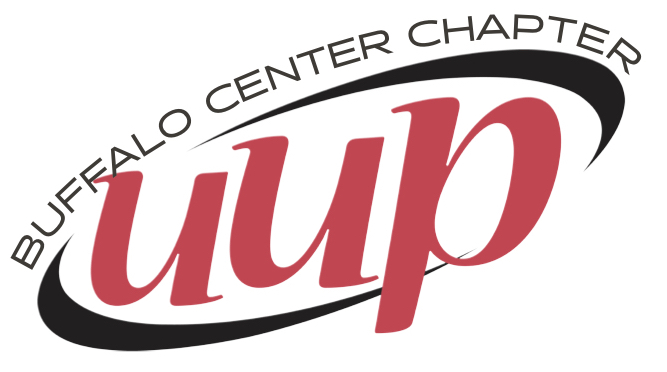Dear Colleagues,
In follow up to the 2022 DSI/Compression List sent out earlier this week, the following information is being shared with you regarding the 2022 Compression distribution for the university.
In addition, an example of How to Determine How Much Your Salary is Compressed is attached.
2022 Campus Compression Report Form
The purpose of this form is to inform the campus community, SUNY System Administration, and UUP about the allocation of salary compression/inversion increases pursuant to the guidelines and methodology established through negotiations between the State/SUNY/UUP, including permissible discretion used by the administration to address campus-specific circumstances. Any questions should be addressed to Human Resources.
Campus – University at Buffalo
Year of distribution 2022
Amount of DSI funds available for compression/inversion (dollar figure of 0.5% of campus salaries) $1,716,258
Amount of compression/inversion salary increases actually distributed (Could be equivalent to 0.5% of campus salaries or more if other DSI funds were added) $1,716,258
Was a minimum threshold used for allocation of compression/inversion increases?
I.e., Was there a dollar amount of identified compression/inversion for full-time employees (pro-rated for part-time employees) below which identified compression was not remediated?
Yes, Threshold Amount $1,000; No_____________
Was the compression/inversion money distributed proportionately across UUP members who have compression/inversion identified for campus remediation.? In other words, did all individuals identified for compression/inversion increases get the same percentage of their compression/inversion remediated?
Yes (Indicate percentage of identified compression remediated for all) 10.68%
No ____________________
If No, explain the campus distribution process, identifying the departments/functional areas that received a higher percentage of remediation than the “norm” across campus, the rationale for doing so, and the percentage of identified compression remediated in each of these departments/functional areas.
Campuses have discretion to exclude certain types of employees from the regression analysis and from remediation (i.e. receipt of salary increases to remediate compression). Identify if any of the following permissible exclusions were made by the campus administration:
Excluded
Yes/No
Yes Employees paid on a fee basis if their salaries cannot effectively be annualized and they earned less than $2,500 in the 26 pay periods preceding the date of the payroll used to perform the regression.
Yes Employees who have been off payroll on leave without pay for two years or more as of the payroll used to perform the regression.
Yes Visiting academics with less than four years of service in title (being careful NOT to exclude those temporarily in Qualified Academic Rank for tenure clock stop purposes).
Yes Division 1 athletic directors, and head coaches who have individually negotiated, market-based contracts in addition to a standard appointment letter.
Yes Faculty compensated at unusually high rates relative to other faculty in the same department/discipline (primarily at the University and Health Science Centers) whose salary deviates significantly from predicted salary given academic rank, market, and years in rank.
Campuses have discretion to exclude certain types of employees who were included in the regression analysis from remediation (i.e. receipt of salary increases to remediate compression). Identify if any of the following permissible exclusions were made by the campus administration:
Excluded
Yes/No
Yes Part-time academics paid on a bi-weekly or other non-annual salaried basis with less than 2 years of service
Yes Part-time professionals paid on a bi-weekly or hourly basis with less than 2 years of service
Yes New employees with less than two years of service
No Certain retirees who are working post-retirement under Section 212
No Employees working under a settlement agreement which includes an exit strategy
Yes Full-time employees who have received notices of non-renewal
Data sources used for market salary benchmarks
For Academics
CUPA 2021 Faculty in Higher Education Survey is the standard source using Tenure Track Faculty, New Assistant Professor in each department/discipline (except as otherwise specifically allowed).
Identify which CUPA data source was used and any alternative approved data sources, identified in the SUNY-UUP guidelines for distribution of these salary increases. The source(s) used are as follows:
CUPA 2020 Faculty in Higher Education Survey
For Professionals
CUPA 2021 Professionals in Higher Education Survey should be used wherever possible. For certain positions the CUPA Staff or Administrators Surveys may contain comparable titles which are more appropriate comparators for benchmarking purposes. In those circumstances these surveys may be used instead. If CUPA data were not available for particular departments or functional areas, alternative data sources for those departments/functional areas as noted in the SUNY-UUP guidelines for distribution of these salary increases were used.
Identify any alternative data sources used for Professionals, and the departments/functional areas for which they were used. The sources used are as follows:
None
In Solidarity,
Ken Kern
Chapter President
UUP Buffalo Center
